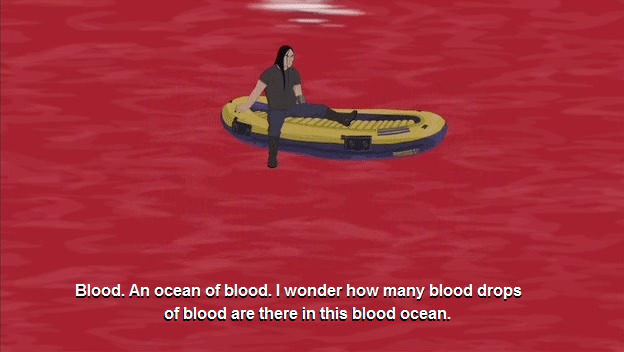Blood Falls Give Hope For Life On Mars
In Antarctica, Blood Falls spew forth unto the white landscape, gushing dark red liquid into the purity of the snow and ice. This unsettling image is giving scientists hope that one day they might find a mass equally strange on the Red Planet. Blood Falls belch deep water from far beneath the surface of the Antarctic dry valley, showing how areas of low resistivity can be found in areas where otherwise dry permafrost or otherwise high resistivity in glacier ice are dominant. In this brine that bursts from the ice, life can be found.
Antarctica's McMurdo Dry Valleys is where we're going for this strange journey. It's cold there. It's desolate. It's a desert environment within the massive frozen land mass at the South Pole of our Earth.
It's a brutal place.
There an ooze of red liquid comes up from the ground, up from the Taylor Glacier and down in to Lake Bonney.
Inside this red goo is iron oxide, giving it its bright red color. Also inside this gunk is very, very tiny bacterial life.
This same crew also discovered that the brine that pops up at Blood Falls doesn't only appear in Lake Bonney. It appears in several other lakes in the area.

They show here how an underground system might connect the lakes, creating a much more extensive subsurface ecosystem than was ever suspected of existing in the past.
Recent analysis of minerals in the Gale Crater on Mars have suggested that chemoautotrophic microorganisms could have lived in these fluvio-lacustrine environments. Areas where water flowed, areas where water sat – they're on Mars – they're plain to see.
What findings in this paper suggest is that hydrological connectivity between lake beds on Mars could exist.
"The subpermafrost brines in the MDV," says the paper, "provide an important terrestrial analogue for future exploration of a subsurface Martian habitat."
If there's life as we know it on Mars, our best bet in finding it – for the moment – might be to dig.
Sound like a good idea to you?

This information comes from the paper "Deep groundwater and potential subsurface habitats beneath an Antarctic dry valley" published in Nature Communications under code doi:10.1038/ncomms7831. Authors include J. A. Mikucki, E. Auken, S. Tulaczyk, R. A. Virginia, C. Schamper, K. I. Sørensen, P. T. Doran, H. Dugan, and N. Foley.
